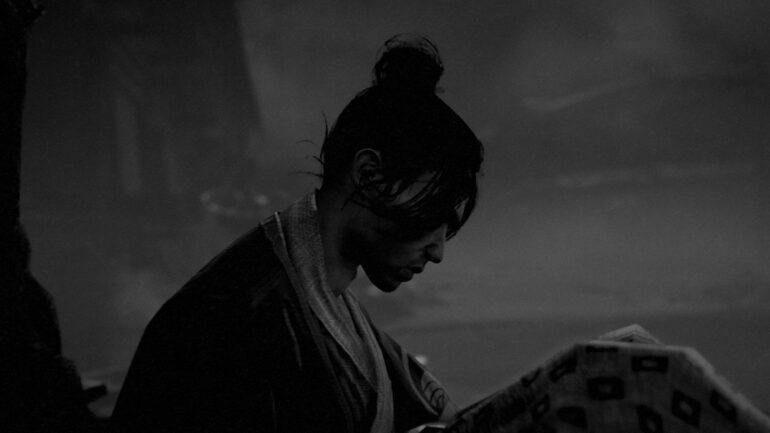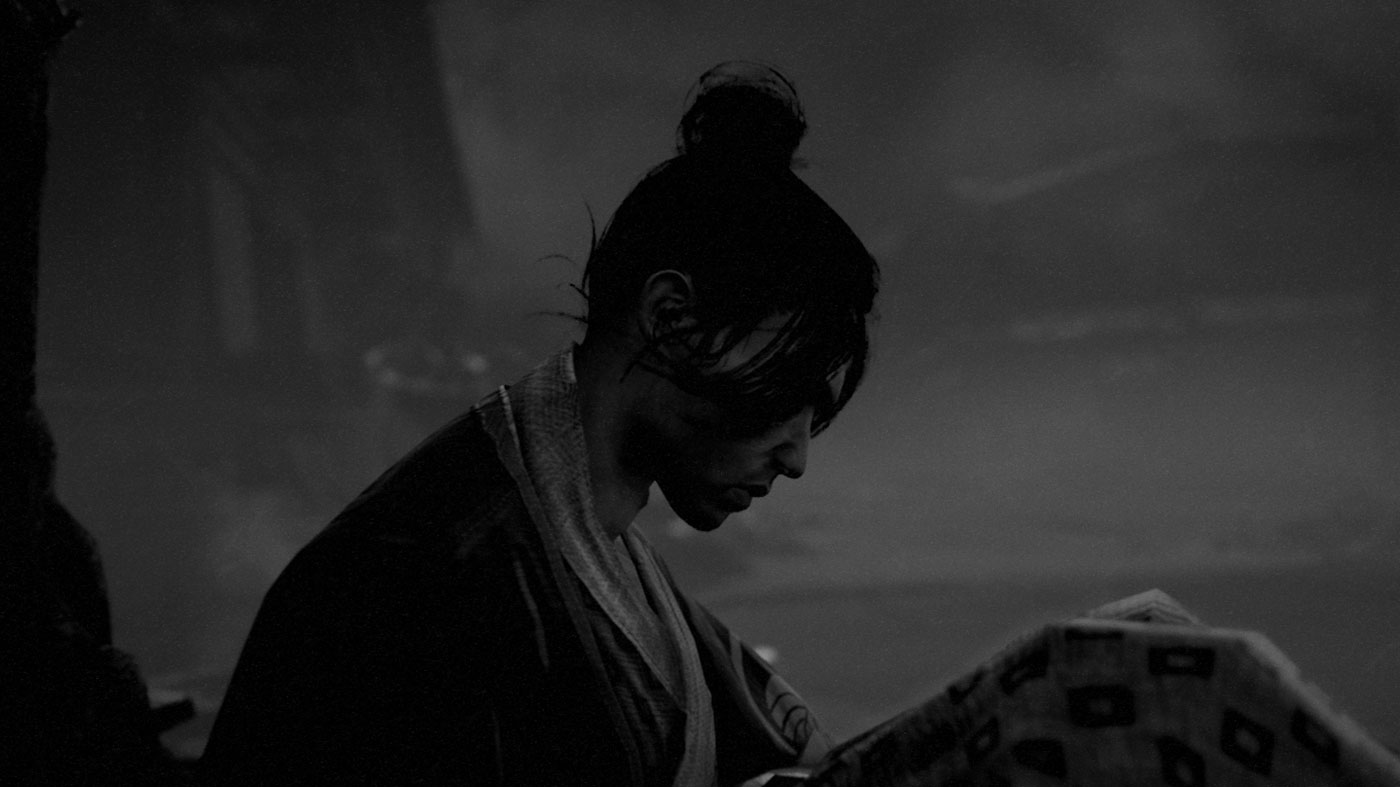At its reveal, I felt a stirring inside of me that assured me that Trek to Yomi might be one of those special experiences. A transcendental game that mirrors a mood or feeling lost to time, and a perfect art piece that adapts the central pillars that inspires its very existence. I think Trek to Yomi succeeds in being something that, were he born several decades later, Akira Kurosawa might be proud to call his own. However, because it lacks nuance and is so boxed in by its limitations as a game, Trek to Yomi is a hollow, albeit gorgeous, title.
Trek to Yomi’s tale feels like a road well-travelled. Hiroki’s tale is one of a tortured samurai so bound to duty, and so grief-stricken from his past failures, that not even death frees him. It’s a simple narrative that is driven forward by the traditional tropes of the genre, but is made more engrossing by the game’s determined dedication to authenticity, Japan’s culture, and mythology.
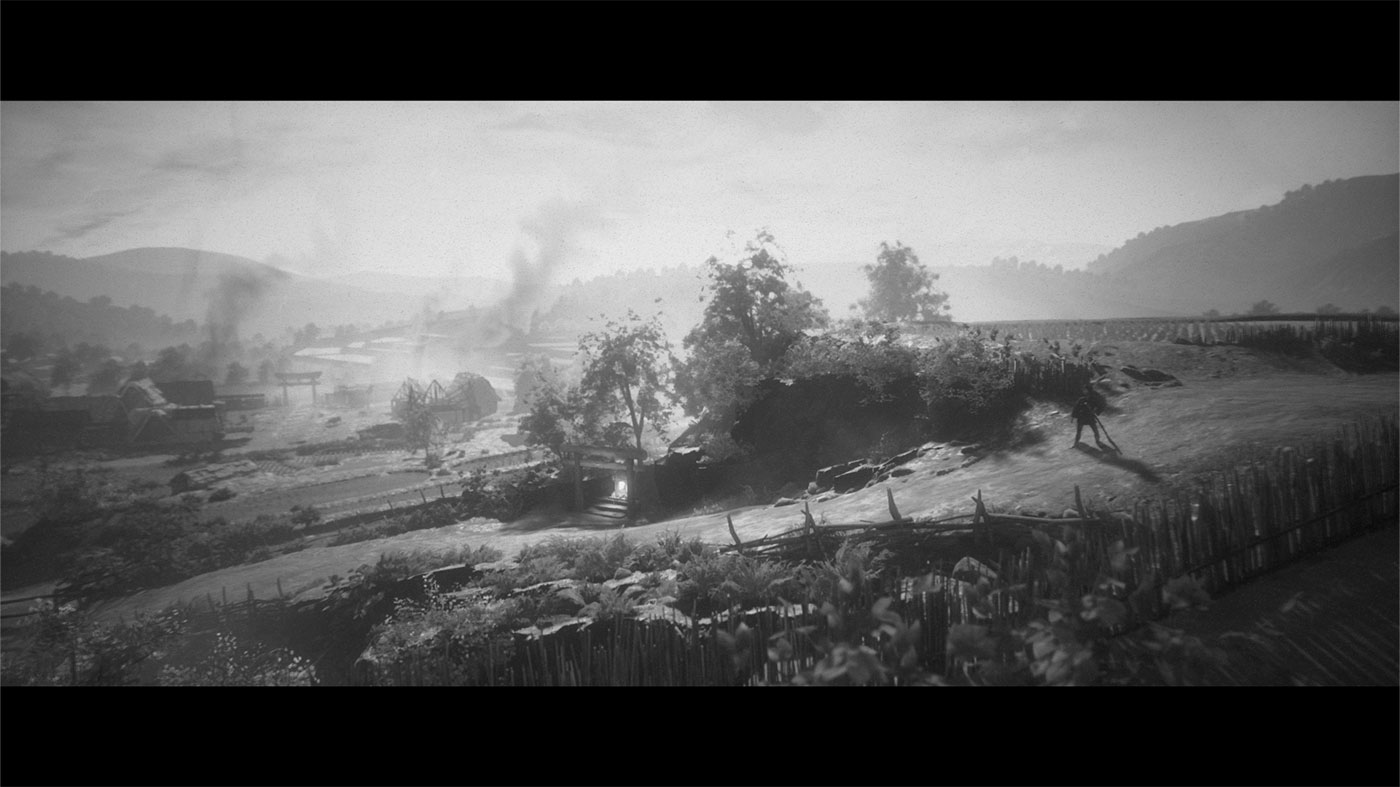
Trek to Yomi plays almost like a classic Prince of Persia, except obviously set in feudal Japan and without a jump button. Inspired by near-century-old silent films, Trek to Yomi plays out like a gorgeous stage play where every set Hiroki visits, by moving left or right through the world, is more stunning than the last. The game, set in a 2.5D plane, burdens the pretty rudimentary combat systems with carrying the entirety of the gameplay loop. Unfortunately, when a simple parry, counterattack, and occasional finisher, gets the job done, Hiroki’s grocery list of combos isn’t likely to resonate with most people. I had hoped that the game’s decent variety of enemies might force me to adopt particular postures and engage in some elegant swordplay, but it wasn’t to be.
Even as the game takes a turn for the supernatural, it becomes evident that even those not composed of flesh and bone fall easily enough to Hiroki’s blade. And even when the blade doesn’t do its job, you’ve got enough arrows, daggers, and ballistics to defeat a small army. I never felt underpowered in Trek to Yomi, it does a good job of keeping the drip-feed of new abilities and upgrades—more health, stamina, and more room on the hip and quiver—provided you’re prepared to stray from the path to spot them.
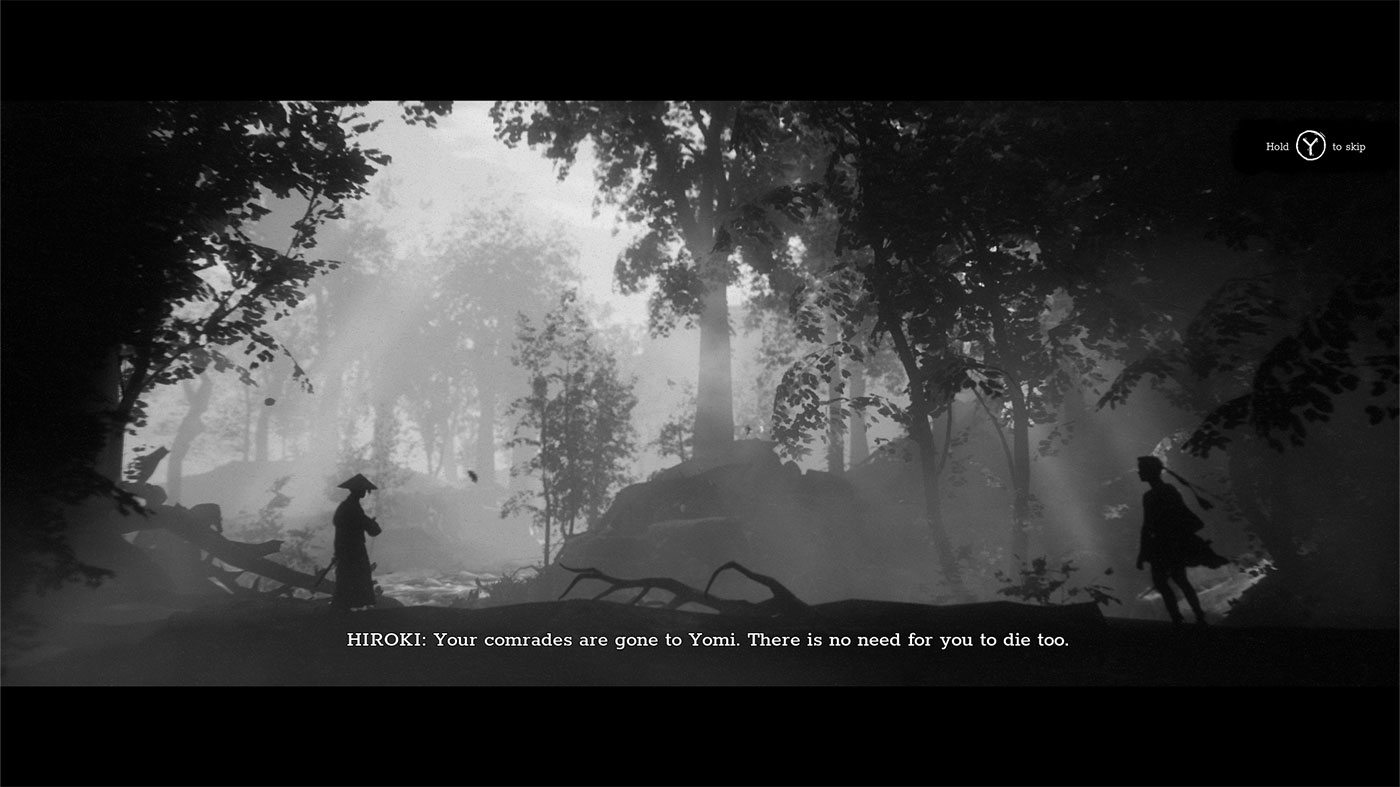
Despite the game’s best efforts to be accessible and cater to all crowds with a wealth of difficulty options, including a story mode that is a literal breeze, I feel like this works to the game’s detriment. While there’s minutiae to the game’s combat that can be unearthed, I feel most will look past it and take the reductive approach to combat—especially once it’s proven that most enemies fall to a heavy hit or two. The skeleton of the game’s combat simply isn’t exactly dynamic enough to make whacking away at the easiest difficulties interesting, nor the hardest difficulties fair.
It’s this same combat that does a lot of the heavy lifting for Trek to Yomi, although the team tries desperately to shake things up in the later chapters by serving up an attempt at environmental puzzle-solving. I appreciate them trying to change gears, but I’m not sure playing ‘I Spy’ with iconography within the game’s carefully curated frames and translating it to a path-clearing spin-wheel is the answer.
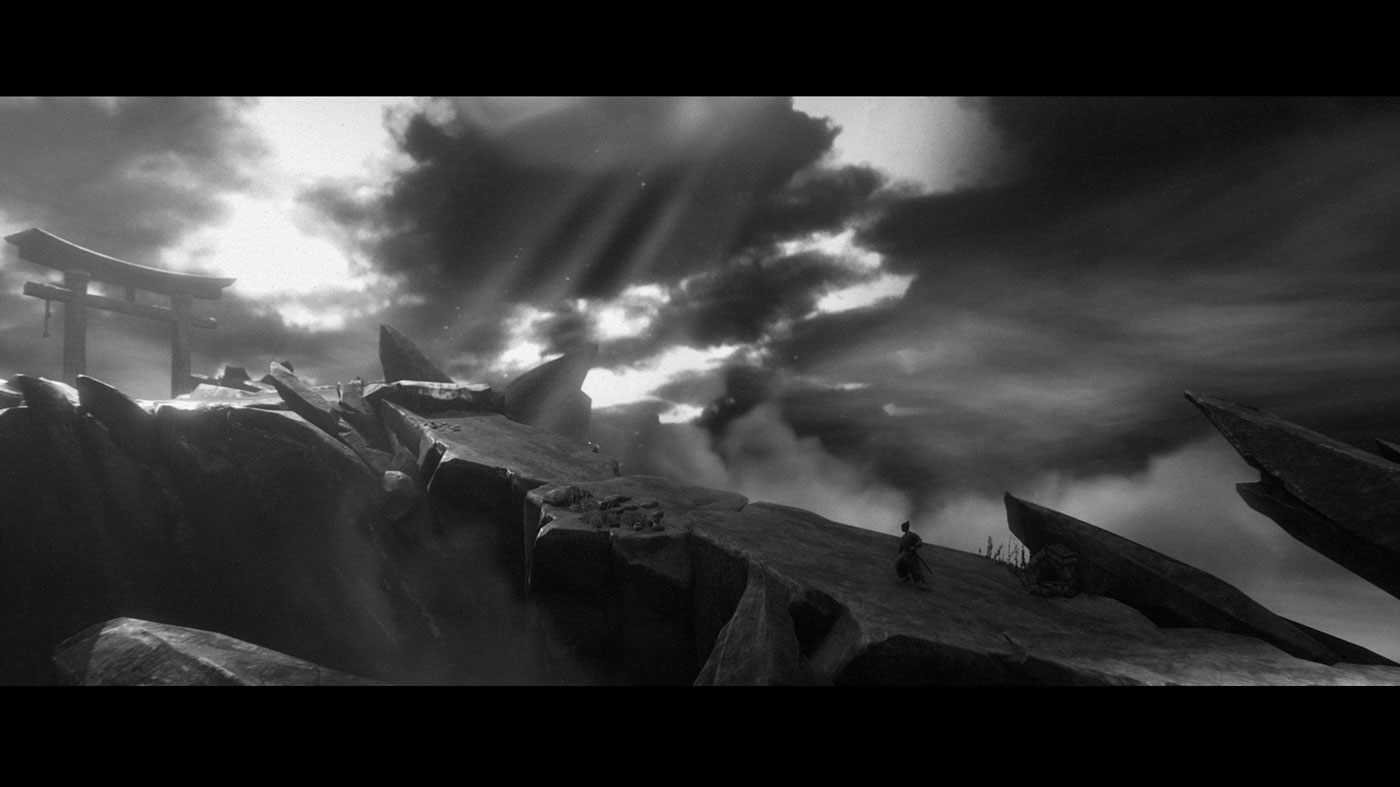
It is hardly surprising that the game’s visual identity is its shining accomplishment. Leonard Menchiari, the game’s lead designer, established the game’s striking monochromatic look early on, eventually tying it to an idea to honour classic samurai cinema. Trek to Yomi is truly a breathtaking game at times, it might go down as the most screenshots I’ve ever taken in a game—and the fact that Trek to Yomi is only around six hours makes that feat even more astounding. By taking camera movement out of players’ hands, Trek to Yomi achieves a standard of cinematography not seen in most games.
As one-note as it is, the balletic nature of the swordplay is quite smooth. It’s kind of everywhere else where the animation looks a little stiff and constrained by budget. Hiroki doesn’t feel fleet of foot, enemies ragdoll like spent elastic, but it doesn’t prevent Trek to Yomi from being one of the most striking games I’ve played this year. The lighting is beyond gorgeous, even if the bloom near certain light sources—crackling fire for one—could be toned down a tad. It won’t take combing through to notice the obsessive detail poured into each frame of this Edo Japan, and every sweeping expanse—be it the limitless fields bloodied by invasion or the literal ruins of hell—had me awestruck.
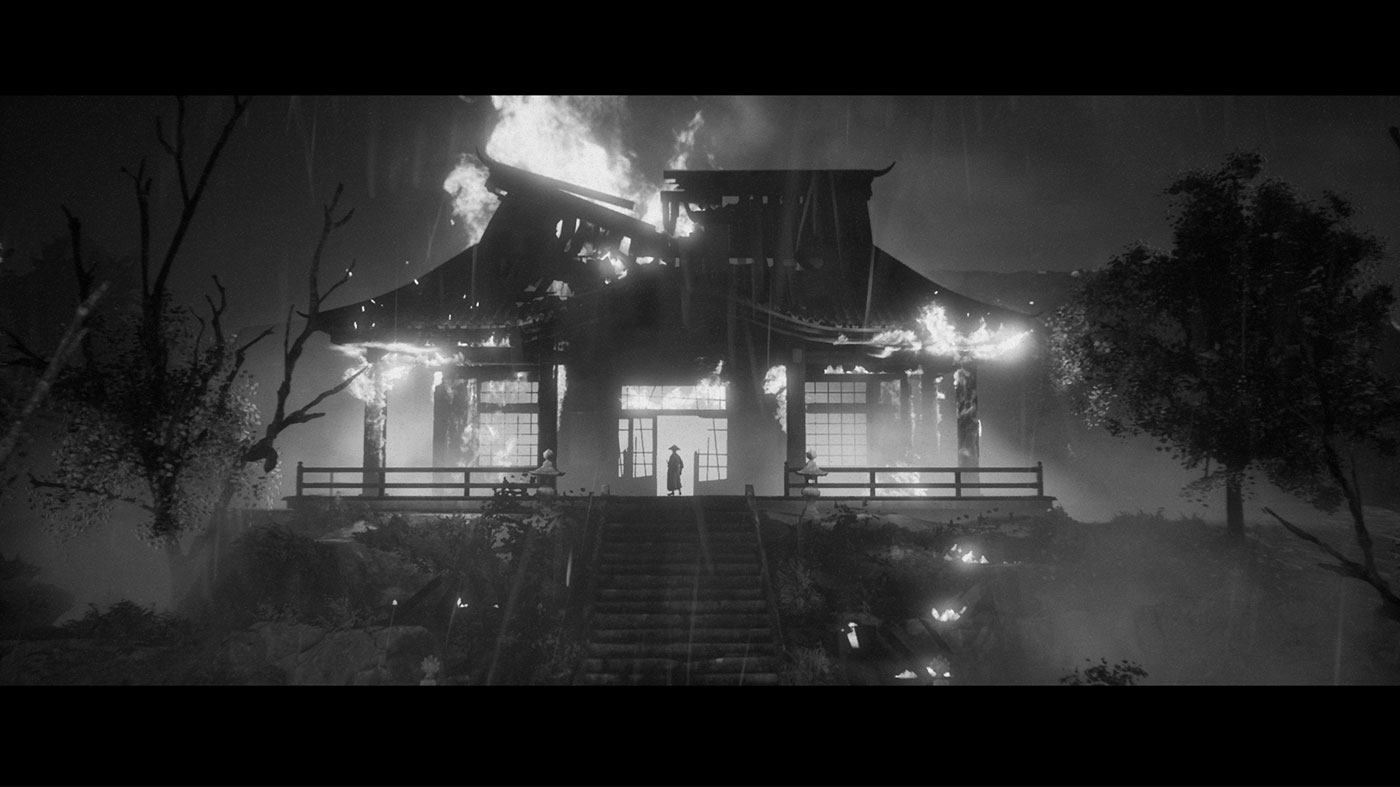
Trek to Yomi achieves an even greater immersion and authenticity through its use of traditional Japanese instruments. Even greater are the well-directed, powerful performances from the native voice actors, which the game rightly places front and centre as the default option.
It’s hard to argue that the vision of Trek to Yomi has been left wanting here. It’s a cinematic tour de force that honours a samurai’s call of duty through the lens of Kurosawa, one of the all-time legendary directors. It’s just such a shame the combat doesn’t rise to meet the standard set by the team’s impossible-to-fault artists.


